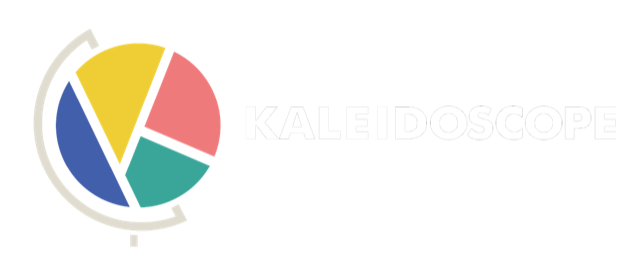By Edie Abraham-Macht
2022 has been a year of experimentation and growth for Kaleidoscope. It is also the year that I joined the team full-time, which makes it a particularly special one for me! When I started as a summer curriculum development intern in March 2020, Kaleidoscope was navigating a transitional period necessitated by the upheaval of the pandemic. Now—thanks to our founder Sarah’s spirit of innovation and staggering ability to take changes in stride—we’re best-in-class at running online discussion seminars, and our unique approach to a modern liberal arts education has reached students in nearly every corner of the country and the world. I’m incredibly proud of how far we’ve come and excited about where we’ll go from here.
As I said above, I’d have called us best-in-class at online discussion seminars going into this year. That’s still true. But thanks to our new partnership with Rise—a program backed by Schmidt Futures and the Rhodes Trust that supports brilliant high schoolers around the world—we were pushed to expand our repertoire.
Our first change was scaling our approach to teach larger classes. In our work with Rise, running classes for 50+ students was commonplace. This meant that we had to figure out how to run bigger events in ways that are just as dynamic and well-received as our small seminars. We were surprised by how much we love bigger events. A few things we find particularly energizing about them: they allow us to scale our impact, bring an even more diverse pool of students into conversation with each other, and encourage us to be more strategic about how to engage students and meaningfully measure their growth as a result of their work with us. We’re also proud that the Rise students gave us a Net Promoter Score of 80 for these large classes, which is just as high as we receive for smaller seminars. You can check out our top tips for teaching large online classes here.
Another way we innovated in online learning this year was experimenting with interactive async classes. You can check out a sample class on how to make over a personal essay using the principles of story structure here. These async classes are a great way to introduce newcomers to our unique approach to online learning, and we also found them to be a surprisingly effective medium for teaching valuable skills—we give short, targeted lectures with pause points and interactions (like polls and open-ended questions) built in, giving participants the chance to immediately put these skills into practice and ensuring that they stick in their minds for the long term.
These interactive async classes are powerful on their own, but they are genuinely transformative as part of another offering we developed this year: workshop modules to teach professional, mental and college skills. Each module combines an interactive video lesson, in-class and peer group workshops, and independent iteration to impart a single valuable skill—for example, How to Design a Winning Resume—and build a culture where improving student work is valued not only by teachers but among peers. In these workshops, we create a living classroom using three core principles: community, conversation, and collaborative critique, which you can read more about here. By leveraging these principles and creating a constellation of learning opportunities around a single idea, we’re able to 10x the learning in our workshops. Click here to read about how we were able to get half a dozen learning opportunities out of each 2-hour workshop we did with Rise students: this approach was what led us to turn standalone workshops into workshop modules in the first place.
Finally, we worked with students from 100+ countries in 2022, which led us to a bigger-picture insight: a growing awareness of the links between education, democracy, and dynamism. If you’re interested in learning more about our germinating thoughts in this area, check out Sarah’s Twitter thread on the topic or her blog post in which she explores how an autocrat would design their ideal education system, providing grounds to dream big about what a democracy-building education could look like.
Last but certainly not least: curriculum design is the beating heart of Kaleidoscope. Crafting tightly woven curricula is incredibly important, challenging and necessarily ongoing work. It’s such an intense pursuit that I can’t imagine doing a full-time job at the same time as designing curriculum, and yet many teachers are asked to do just that–or to make up each day on the fly! As such, since our founding, we’ve been joyfully committed to honing an approach to designing curricula that are relevant, engaging, and preparatory for college and life. In the spirit of ongoing improvement, we’ve pulled together some key curriculum design insights we arrived at this year, which you can read about here.
If any of this sparks an idea or interest, we always love chatting with you: shoot us a DM on Instagram (@kaleidoscope.education)!
Helpful links:
Check out our curriculum offerings
Learn more about workshops
Read more in the Kaleidoscoop

